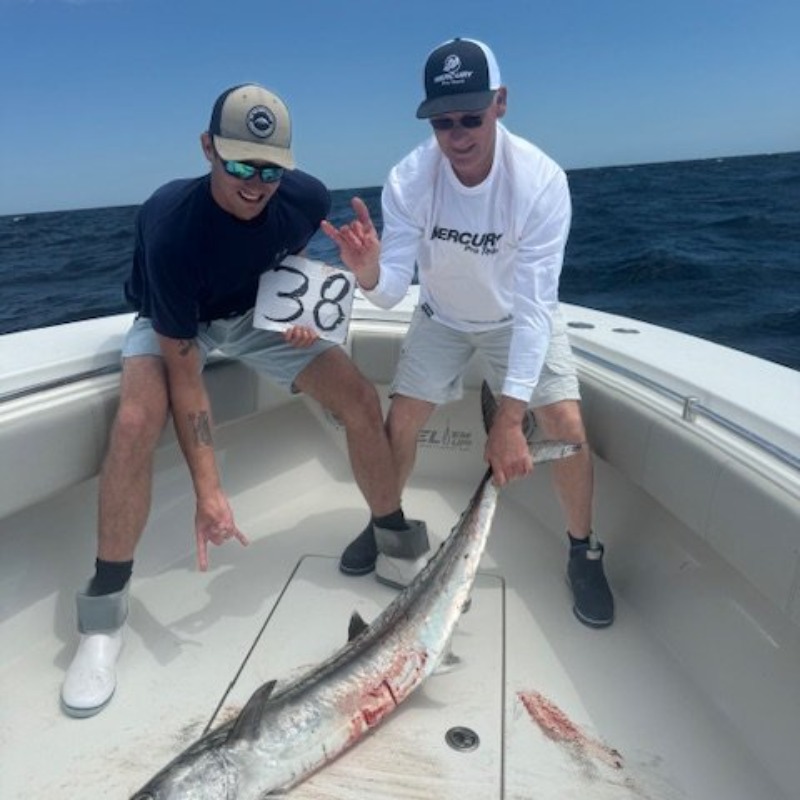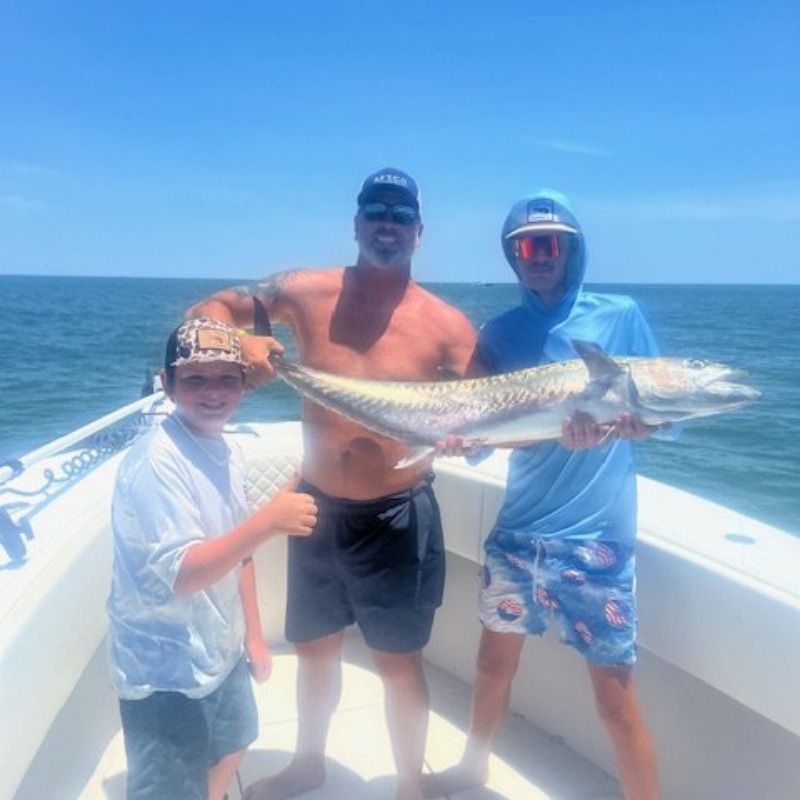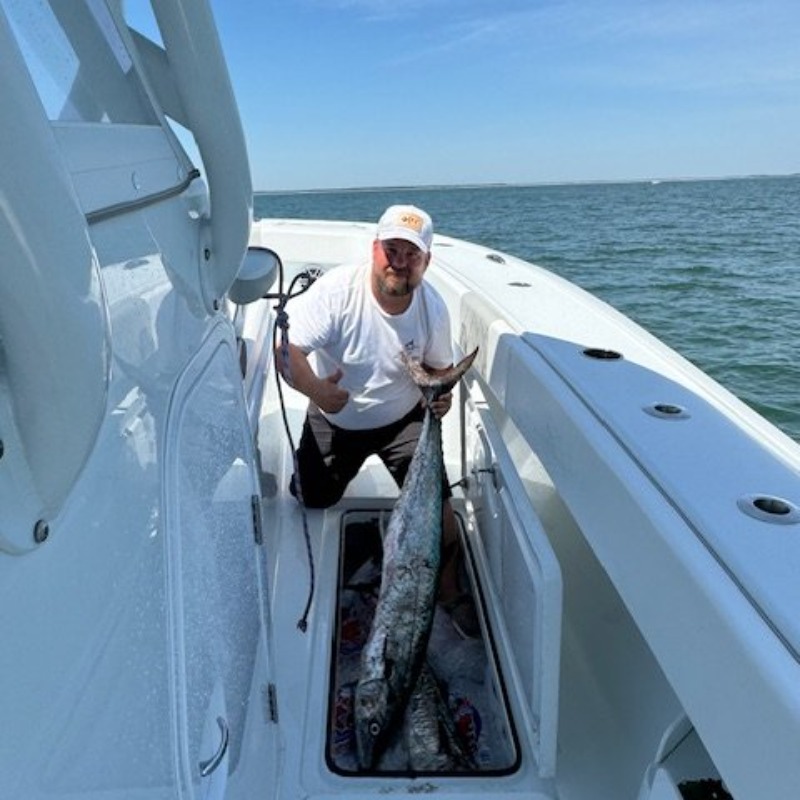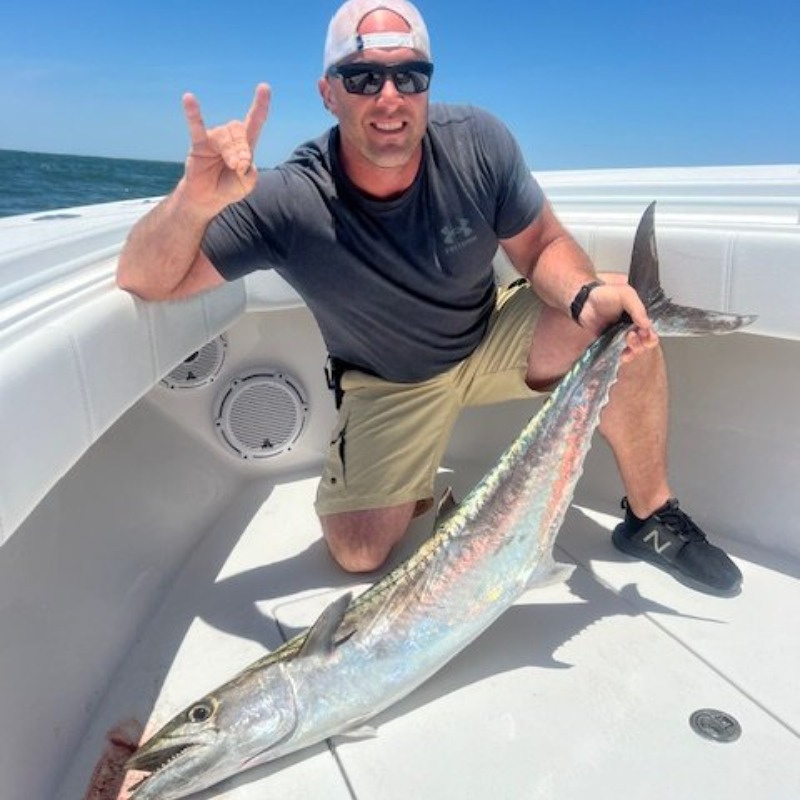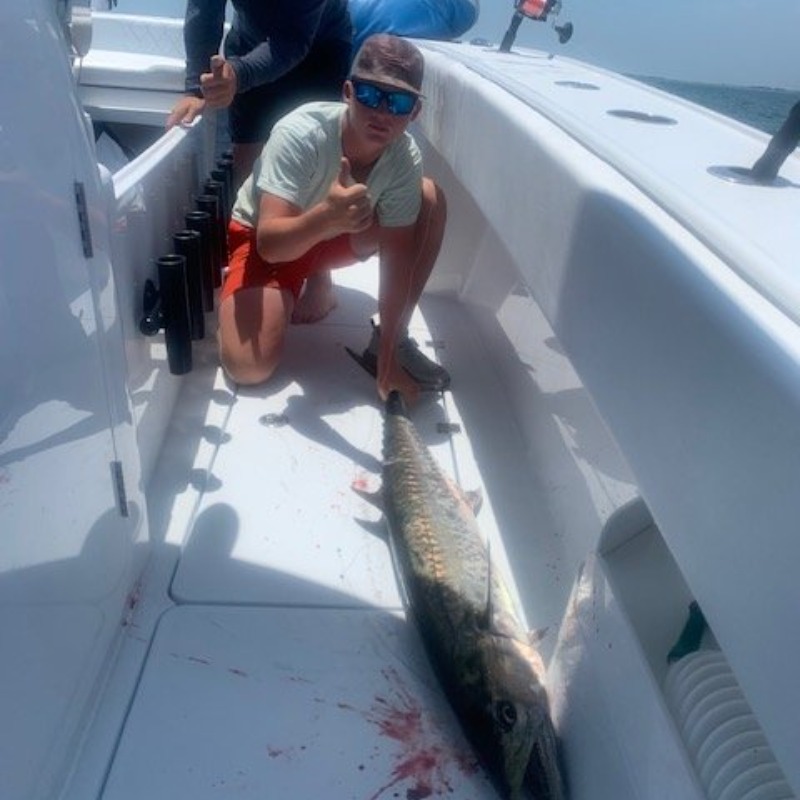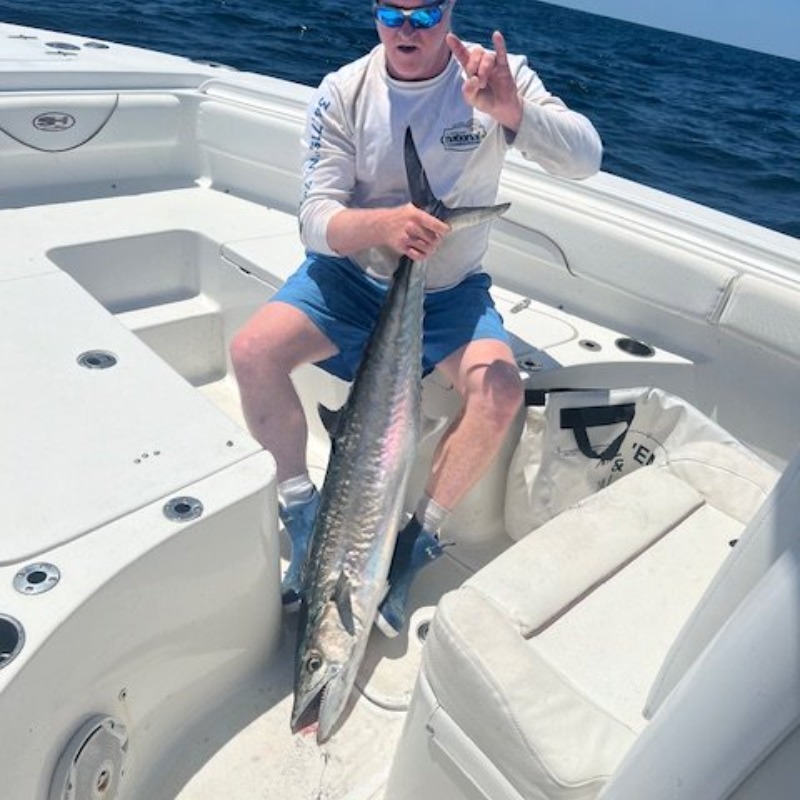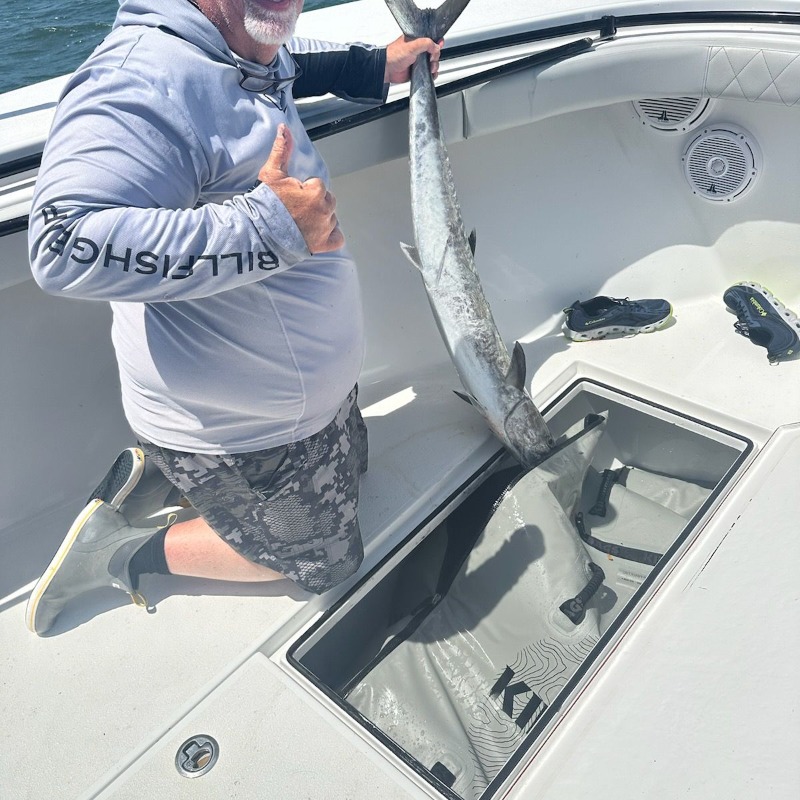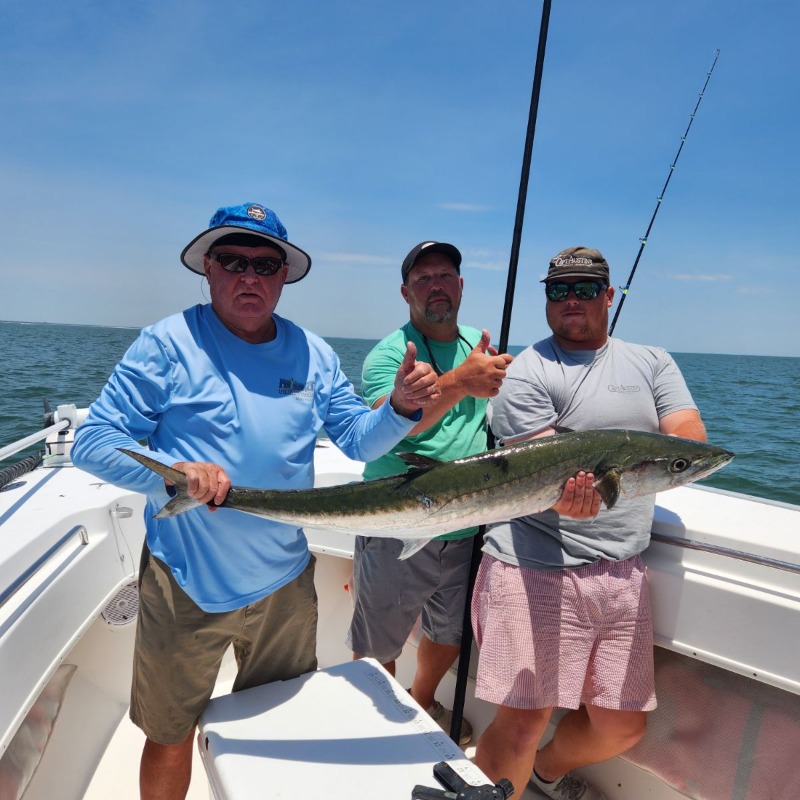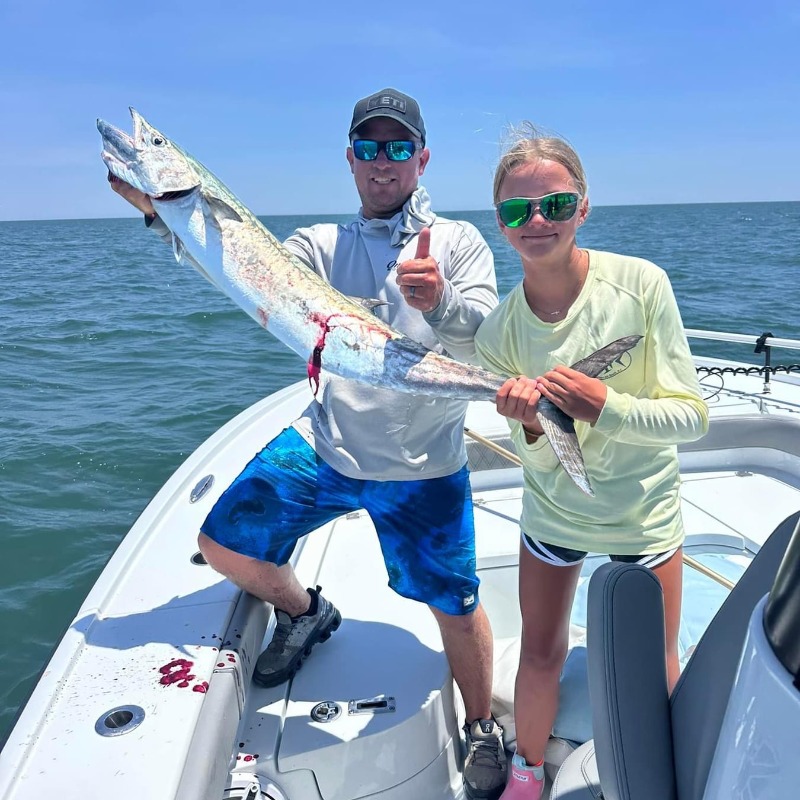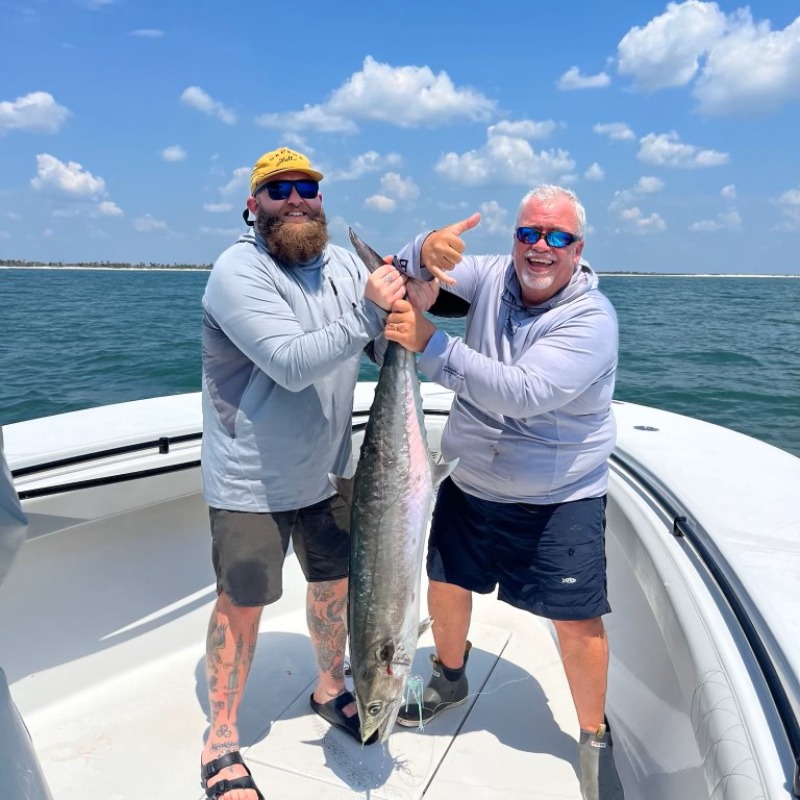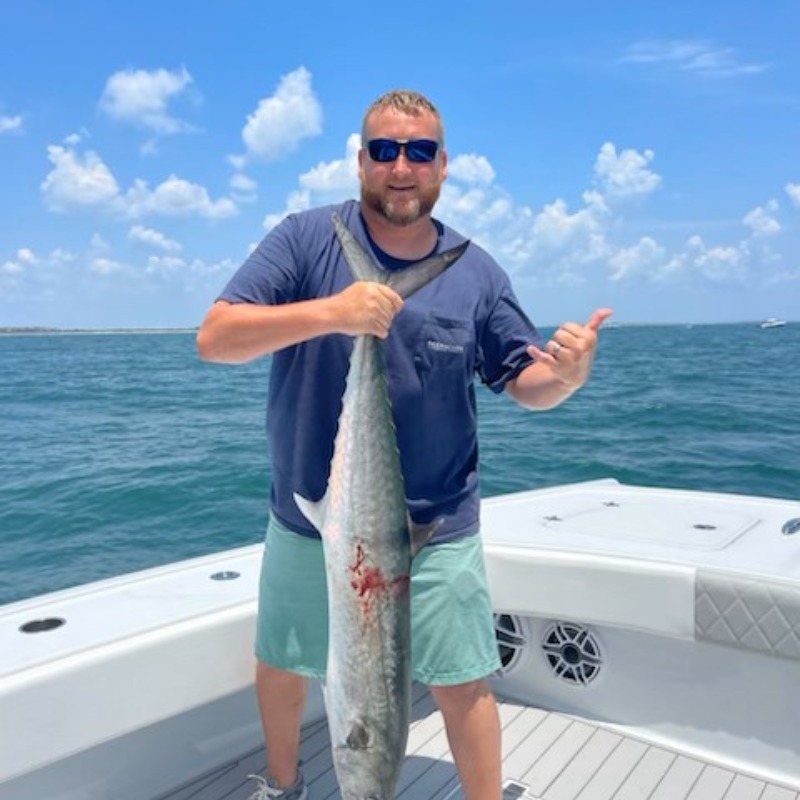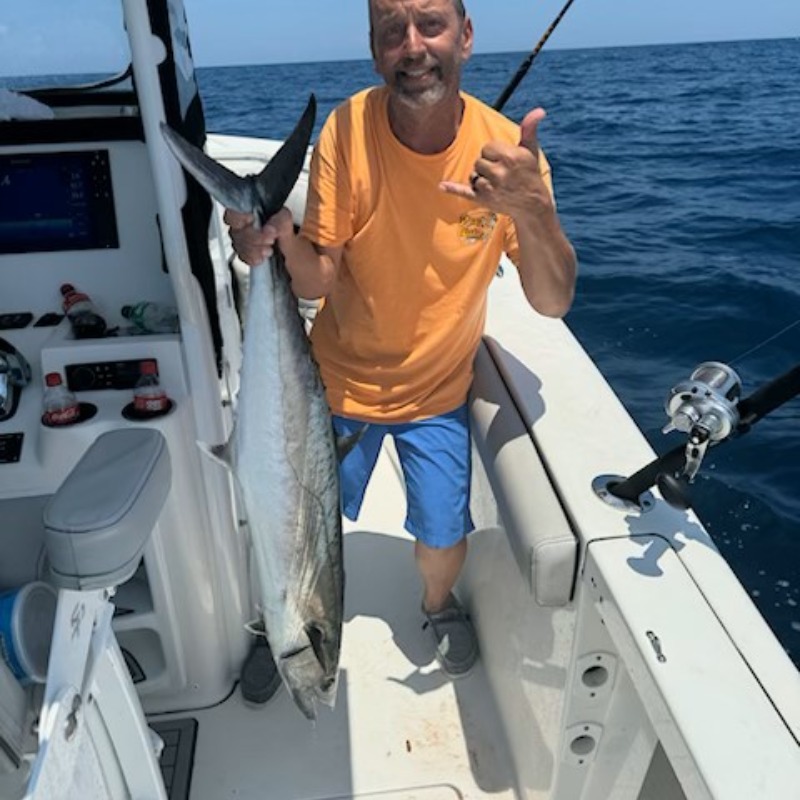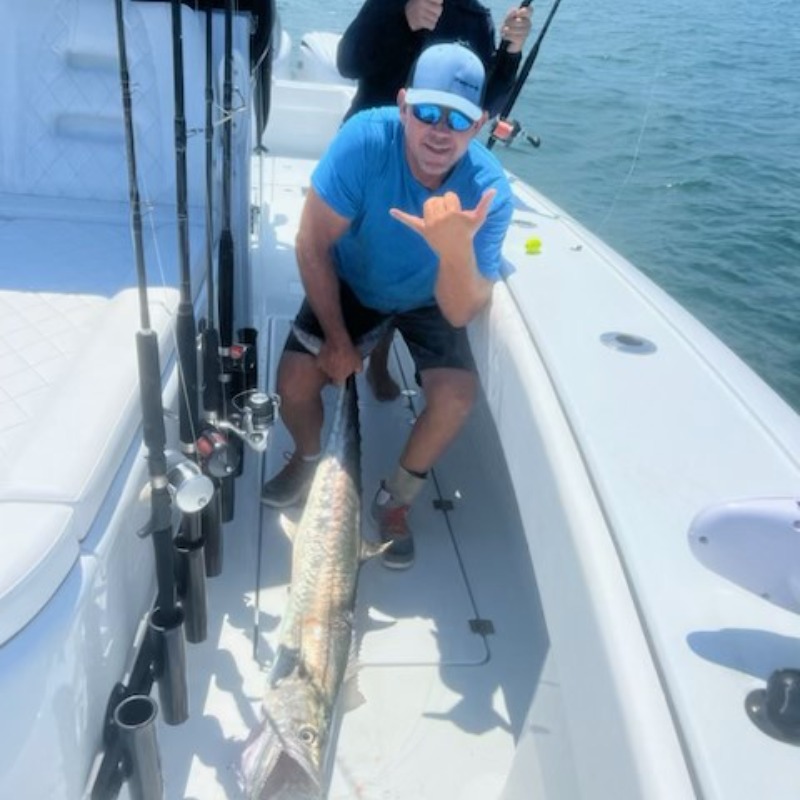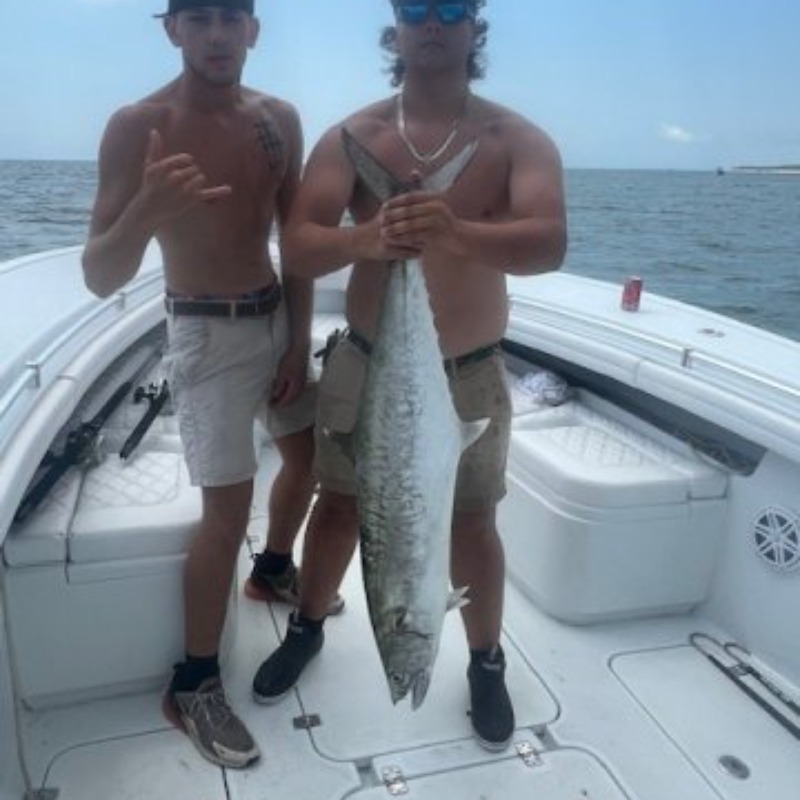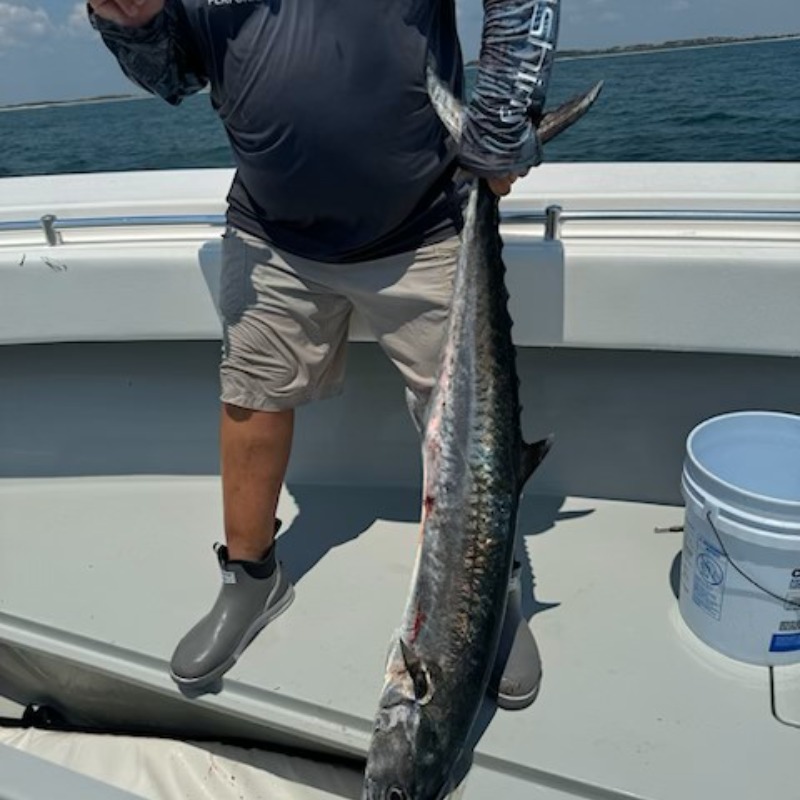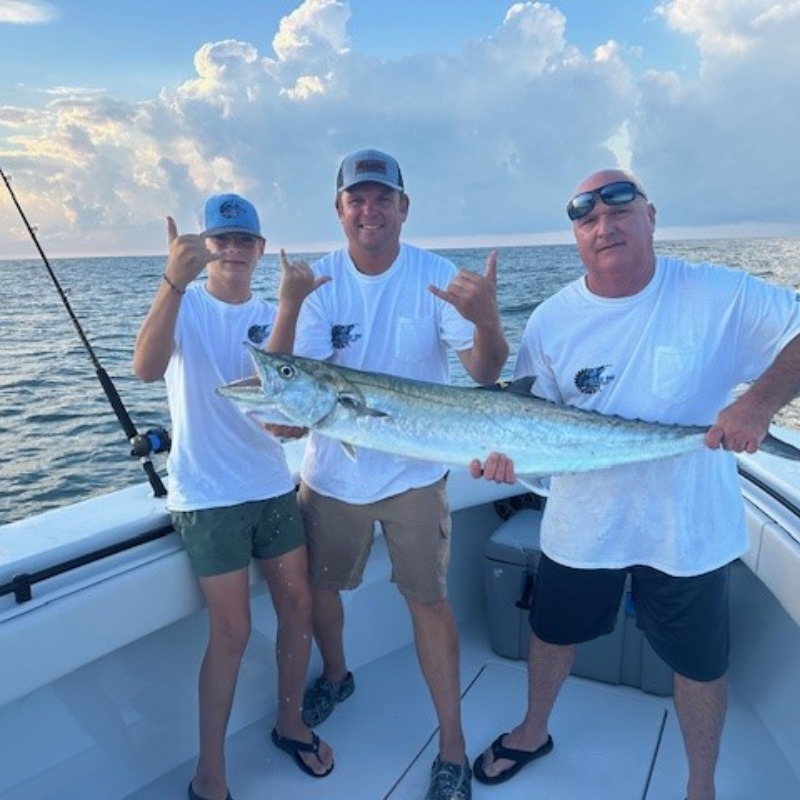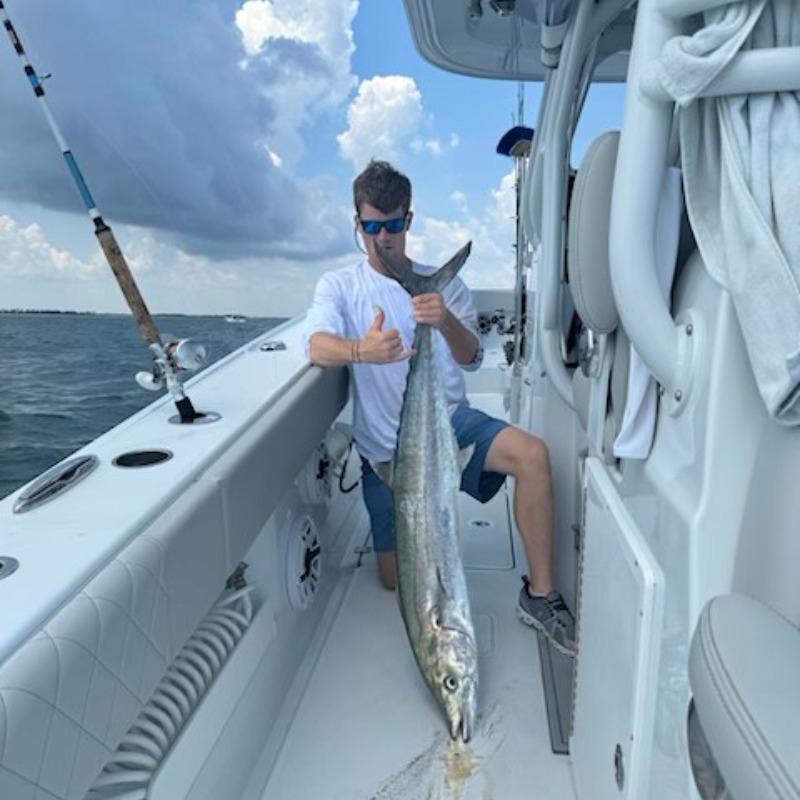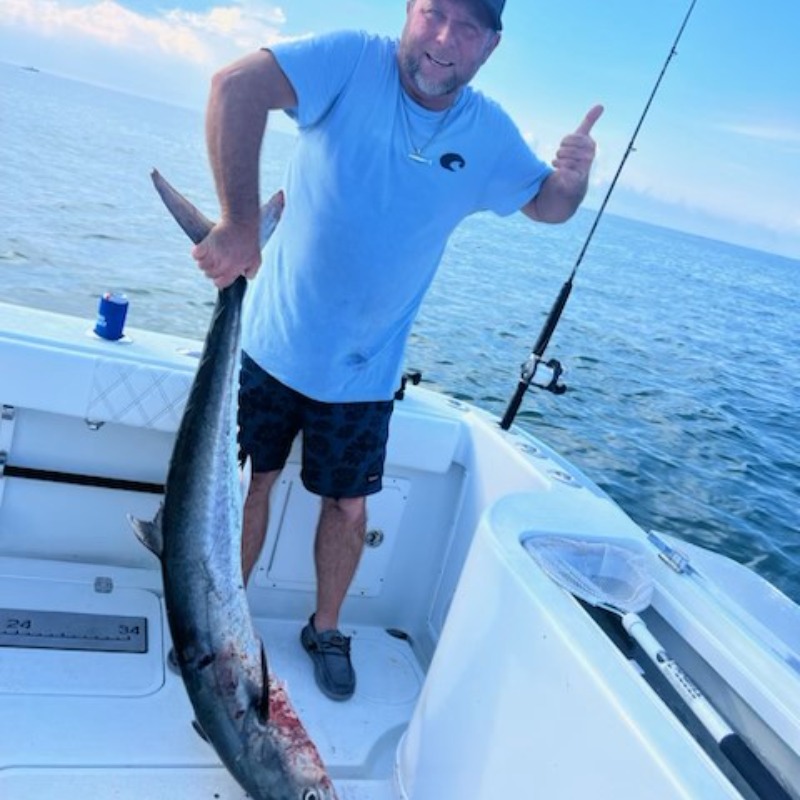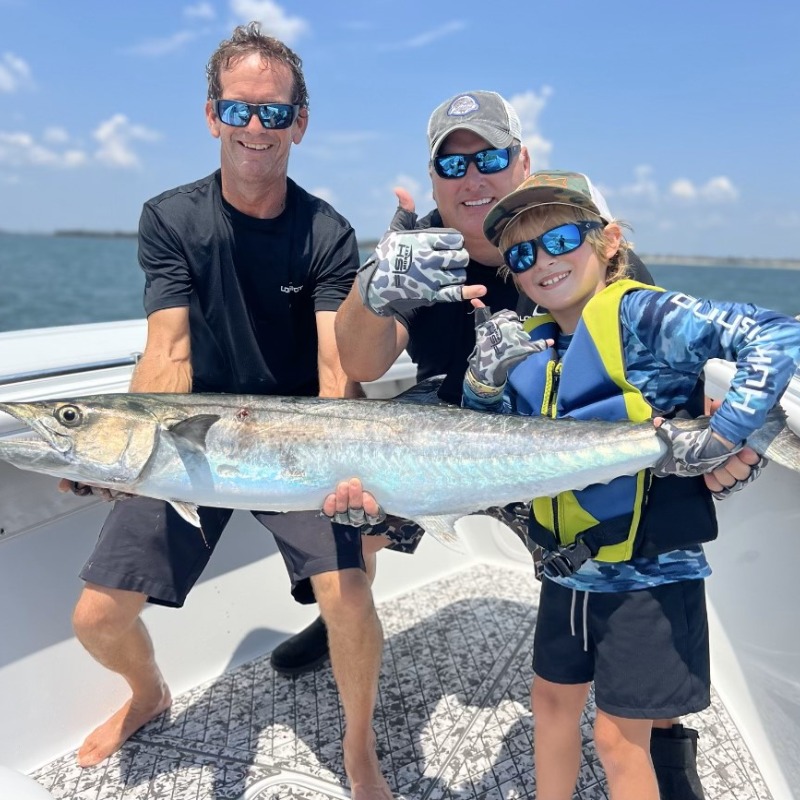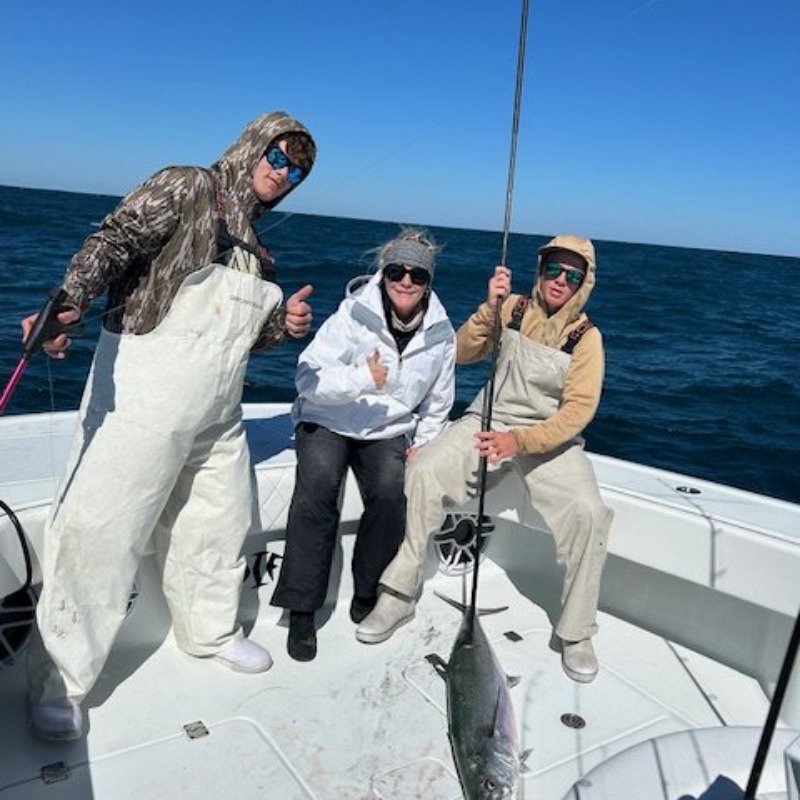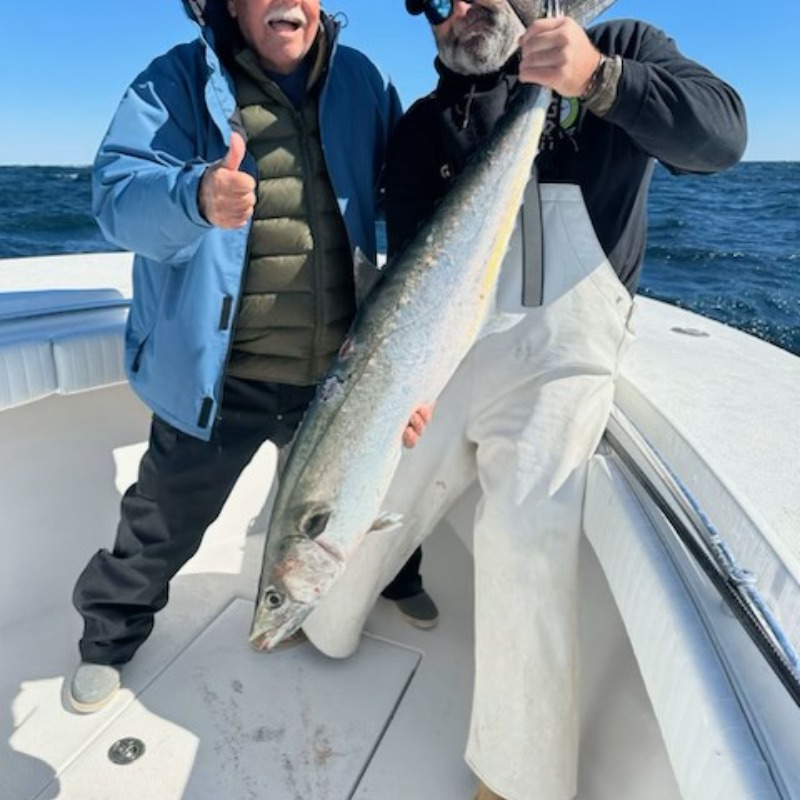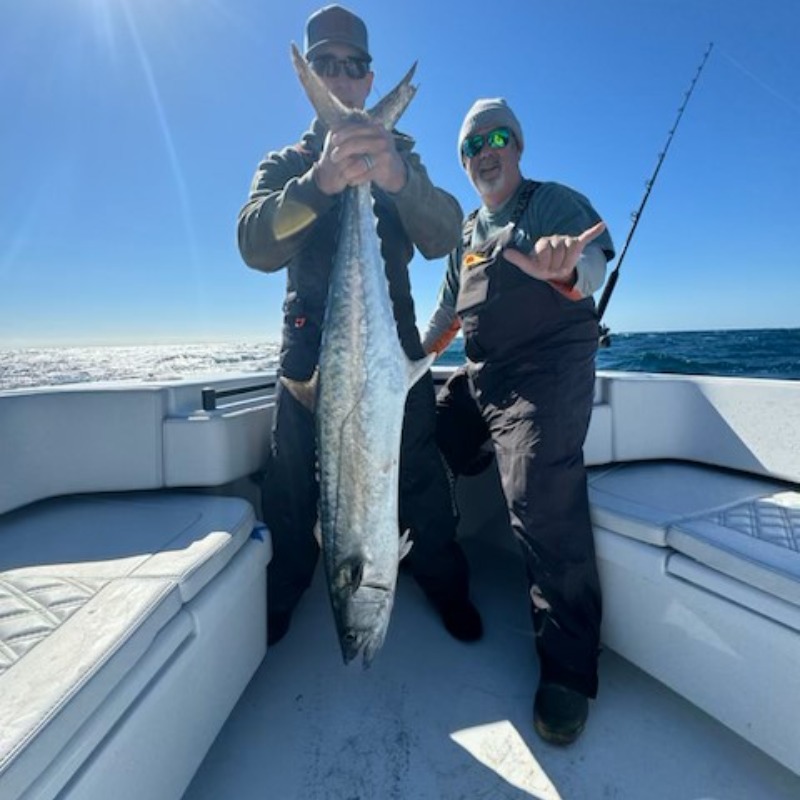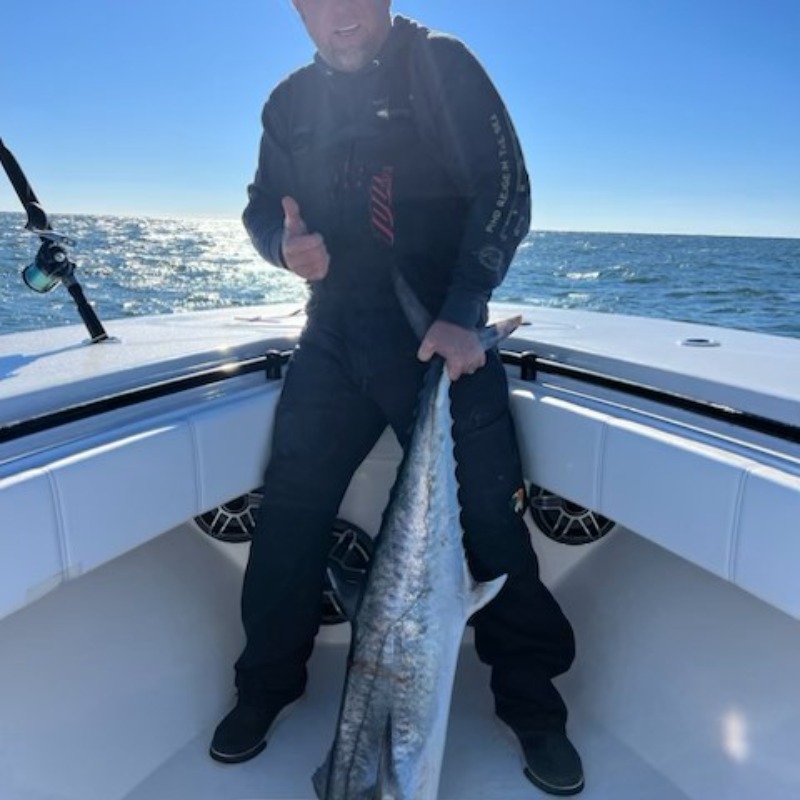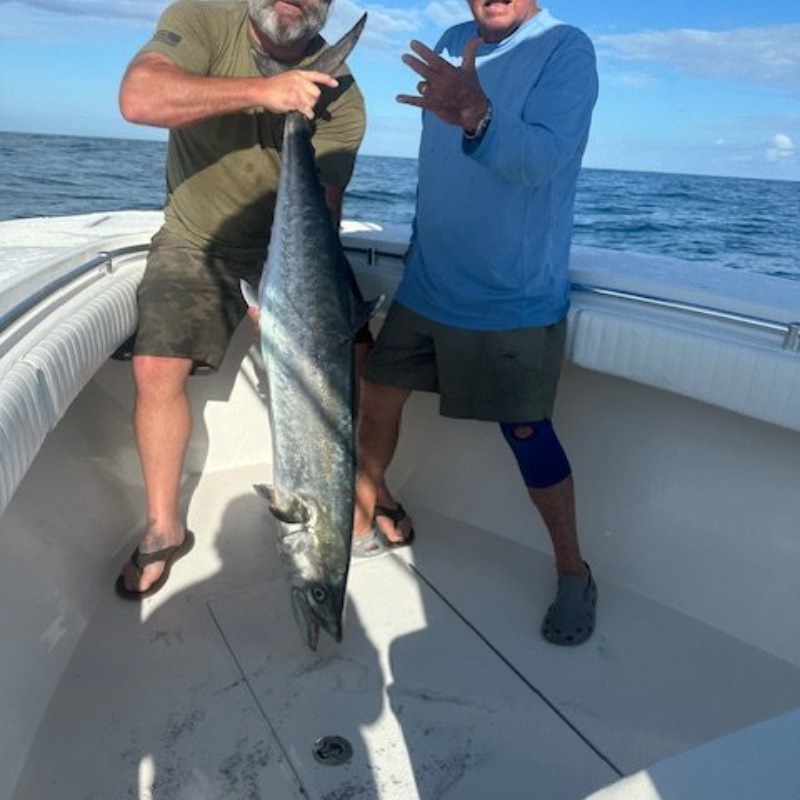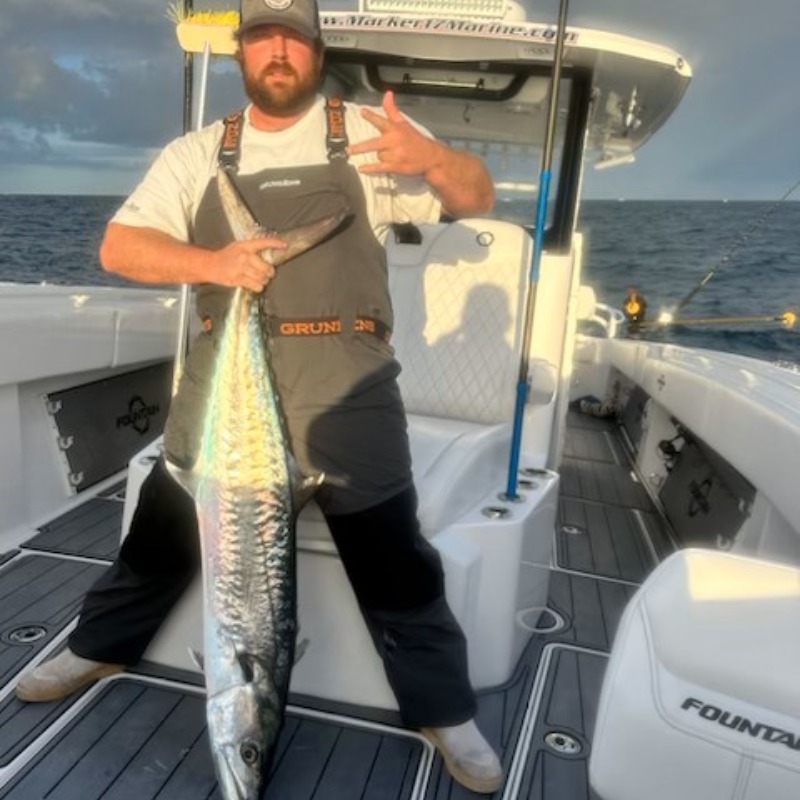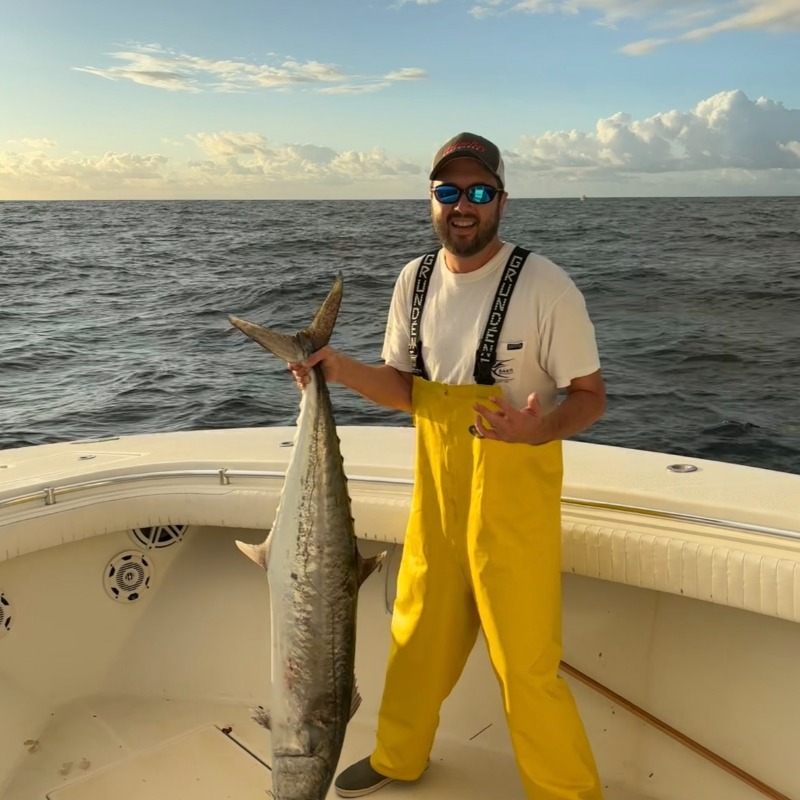
Kingfish Cup Captain's Meeting
The Captain’s Meeting has been changed to Wednesday, June 14th at 7pm. It will be held at the Wing & Fish Company located at 4764 Main Street, Shallotte, NC. A complimentary buffet of Wings, Assorted Appetizers, Chips, Fries, Carrots, Celery and more will be available for all attending teams. The competition amongst teams will also begin as “Kingfish Trivia” will be played by all teams to see who knows this sport and its history the best. There will be an entry fee of $10 to play and it will be a winner-take-all pot; so study up!
It is time to start thinking about entering Levels II and III. We are currently 44% of the way to making the Level II projected payout and 30% of the way to making the Level III projected payout. Many of you promised me you would be entering Levels II & III quickly after the initial entry, so let’s get this thing rolling. The success of the Kingfish Cup is riding on your willingness and desire to play for higher stakes; it is what you asked for. If you prefer to add Levels to your entry by paying with cash or check rather than credit card on-line, you may do so by simply PRINTING THIS ENTRY FORM and mailing your money or dropping it off at the Ocean Isle Fishing Center.
Official Kingfish Cup Captains bags, including t-shirts, stickers and official flag are being put together. You will be emailed when they are ready. It shouldn't be but just another week or two.
That’s the current Kingfish Cup news. The season is still a ways off, so sharpen your hooks, work on your boat, and do all those things to tighten up your game to be ready for the show. See you on the water.
Capt. Brant
Kingfish Cup Team Bio: Back-Lash
We’ll be one of the top qualifiers in the field. We’re as competitive as any boat out there, and we just love whuppin’ up on the big boats. –Eris Jones, March, 2017
Eris Jones can’t tell you about the first time he fished in saltwater. He doesn’t remember, and really, who could? As soon as his hands had developed enough to hold a rod, he was holding one. Eris, with neighbor Patrick Bower and Senior Angler Arthur Hill, form the Sneads Ferry based team “Back-Lash.” They fish a 23’ Yamaha powered Contender, which (to some) might be on the smaller side, but packs more than an ample punch.
Well before he started fishing competitively, Eris had caught his share of king mackerel. When he was 13, throwing a Hopkins jig for grey trout at New River Inlet, a 38 pounder flashed in and grabbed his lure. The Mitchell 300 spinning reel and Lews Speed Stick rod were stressed, no doubt, but the tackle was up to the task. Perhaps, more so than the king, Eris was hooked for life.
Chasing smokers in tournaments began for Eris (who now holds a USCG Master License) in 1996, on a 19’ MitchCraft with a 150 Mariner. Back-Lash is a consistent check recipient when it comes to the leaderboards. Of course, the feather in the cap for the team is the 2015 SKA National Championship, won close to home out of Morehead City. There was no post victory hangover, the team came right back in 2016 and won Division 9, then the Dash for Cash at SKA Nationals. Team Back-Lash also finished third in their class for Division 9 in 2014 and 2015. It goes without saying that Senior Angler honors follow this team like a magnet, too. Arthur Hill (who was on the boat for the National Championship) is 75, and even Eris qualifies for the Senior Class, though just barely.
The Kingfish Cup will be front and center for Team Back-Lash in 2017. The team is excited for the higher level of competition that the series provides, and see it as “The state of things to come in North Carolina.” With regards to the qualifying events, Eris likes the Got-Em-On tourney the best, mostly because it is closest to his team’s base of Sneads Ferry. Their familiarity with the area around New River Inlet and where to find bait has given them a great edge in the past. In the 2016 event, this local knowledge led to another great finish, taking home second place Senior Angler with a 29.70 king, caught in only 12 feet of water!
The Contender 23’ platform that Team Back-Lash chooses is absolutely perfect for what Eris and Company. do with their fishing. They are supremely comfortable in any event when they have to make a run of 50 miles or less, which is most often the case in North Carolina tournaments. With a 300 horsepower Yamaha four stroke engine, this Contender gets outstanding fuel economy. On a recent wahoo trip, running 78 miles offshore and back, the boat only sipped 63 gallons of fuel. To quote the captain directly, “She’s a big 23 footer, and she fishes even bigger than that.” Others have seen the talent and potential of Team Back-Lash and stepped up to support their efforts as sponsors. In addition to being on the Yamaha Pro Fishing and Contender teams, C.E. Smith, Marsh Tacky Carbon Gaffs, Big Neck Fishing, Bett’s Nets, and P-Line are all sponsors.
It’s not just king mackerel tournaments for the Back-Lash, either. Blue water fishing, like the recent wahoo trip, take place on this boat all of the time. Eris has a great assortment of Gulf Stream gear, and he’ll be headed to Oregon Inlet this spring, for a shot at either bluefin or yellowfin tuna. It’s another notch in the team’s belt that they are well-rounded fishermen, not to mention ones which have a great shot at making a trip to Ocracoke in November!
Just go fishing!
Capt. Chris Burrows
March 25th and 26th saw a flurry of activity at the Ocean Isle Fishing Center. The annual Spring Kickoff event has expanded, to where it is now a full-fledged, in-water boat show as well. Flagship hulls from Contender, Yellowfin, Freeman, Invincible, Onslow Bay, and See Vee were on display, with some of the lengths pushing over 40 feet. It’s hard to say which boats stole the show, as any angler should be thrilled to get to fish (or own) just about any of them!
While the boat show was going on, I managed to sit in on one of the seminars taking place on dry land. Jacky DuFour, from Marshallberg, NC, gave a great talk on catching swordfish during the day, sometimes dropping baits to almost 2,000 feet. That’s when it struck me. Jacky catches all of these swords, whether he’s fishing recreationally or on charters, from a 25’ Contender with twin (not triple) 200 horsepower outboards!
Let me first say this, there is absolutely nothing wrong with a 25’ Contender. It is a rock-solid, long producing hull that has been a proven winner for years in the king mackerel fishing world. I distinctly remember Patrick Bryant (Twister) winning Division 9 in 2006 fishing the exact same hull. It was just amazing to realize that the first molds for this particular boat were built long before anyone even thought about building a quadruple engine center console pushing 40 feet that is well capable of running close to 80 miles per hour! You can still buy a 25’ Contender today. It’s still a fantastic platform to fish from, even though Contender now produces much larger and more luxurious boats in addition to their legacy line. If it can be a successful swordfish boat, what can’t it handle?
Let’s be completely honest for a second. If you can find the productive water, have good bait, and properly rigged tackle, the fish of a lifetime does not care or know how big your boat is, how many engines (or what brand) are on the back, or how much your boat payment is.
Is there an advantage to a larger boat? Sometimes there is, especially when it’s rough. Is there a disadvantage? Yeah, there’s one of those, too. Larger boats, almost unequivocally, burn more fuel than smaller ones.
Speed is a wonderful thing, too, and advances in marine technology means that boats can go faster now. When everyone is headed for the same spot, often the fastest boat catches the biggest fish, as they are first to the hole. Having speed at your disposal also means that you might convince yourself run past the best fishing, simply because you can. How many times has a fall tournament been won within sight of land, just outside of an inlet?
The Kingfish Cup was designed to be as level of a playing field as can be found within the confines of tournament king mackerel fishing. There are no financial advantages to having a hull of a certain make, or the color of your engines. The biggest fish brought back to the dock is what speaks. As a captain, you are the master of your team’s destiny. You make the calculation of where you can run, knowing the capabilities of your equipment. You make the call on when you have to pull the plug and run for the scales, allowing yourself enough time to make sure the fish gets counted. You decide what you’re looking for to get the biggest bite you can, what baits to fish and where. At the end of the day, the amount of success you achieve is up to you.
Just go fishing!
Capt. Chris Burrows
Ocracoke Island: Site of the Kingfish Cup Championship
North Carolina boasts some spectacular locales that lie “off the beaten path,” and some of these are a bit harder to get to than others. You can access Ocracoke Island by aircraft or boat only. Fortunately, you already have a boat! Nestled between Hatteras and Portsmouth Islands, Ocracoke is a stretch of sand approximately 17 miles long. Most of it is unspoiled beach and maritime forest, with Hwy 12 connecting the two ends of the island. The village of Ocracoke lies at the south end of the island, neatly arranged around Silver Lake (Ocracoke Harbor). The roots of Ocracoke’s fishing history are still very much evident around Silver Lake, as there are net houses still in use, right there on the docks. The marinas in Silver Lake have a strong charter boat presence, advertising for both inshore and offshore trips. Accommodations aren’t of the high rise or casino style, but range from the clean and modern Anchorage Inn to the extravagant Castle Bed and Breakfast, with just about everything in between.
Ocracoke is a family destination. You won’t find legalized gambling or neon nightlife on the island, even though Howards and Gaffers stay open fairly late. What you will find are a good many activities for all ages, eye popping scenery, great dining, and a safe place for the kids. You can get virtually anywhere you need to go on the island with bikes, golf carts, or just your own two feet. A day on the island is whatever you make of it. Have coffee on one of the elevated decks around Silver Lake and watch the village come to life. Check out the British Cemetery and learn more about the Second World War and its insanely close brush with the Outer Banks. Ride a bicycle to the lighthouse, go on self-guided nature walk, or check out the wild ponies of Ocracoke. Shop in stores that define the word “local.” Or you could simply just enjoy a good book on a beach with virtually no one else in sight. There is no blight on the landscape here, just a great venue to truly get away from it all. That is, when you’re not fishing.
With all respect paid to Louisiana, Ocracoke Island could easily be the most perfect “Sportsman’s Paradise” found in the United States. The back side of the island is the expanse of water known as the Pamlico Sound, where seemingly every shoal or stretch of shallow water has its own duck blind or sink box. Waterfowl season is a busy time on Ocracoke, where people come from all over to enjoy world class wing shooting. Fishing, however, is a year-round activity on Ocracoke. Quite simply, it is all there, from the sound, through Ocracoke Inlet, past the myriads of wrecks, and out to the Gulf Stream, which sometimes comes as close as 30 miles to the beach. Good fishing requires access to productive water, and Ocracoke Island has that access in spades.
Of course, this being the Kingfish Championship, we know what species you have on your minds. This is the real reason for Ocracoke being the site of the championship, because fall king mackerel fishing to the east of the Cape Lookout shoals is without rival! The proximity of the Gulf Stream means that the right conditions to catch a smoker are compressed into a much smaller area than can be found at other tournament sites. The fall king fishing off of the Outer Banks is consistent enough that virtually every charter boat at Ocracoke and Hatteras switches to live bait fishing for kings for most of the month of November, which segues into commercial fishing for kings when the crowds have completely left for the winter. The fish are there in numbers, and we’re not talking about small fish, either. In fact, the North Carolina state record king mackerel came from an Ocracoke charter trip in 1999. How does an 82 pound, 4 ounce fish sound? James Winch’s mark may not be broken this year, or even next year, but the fall bite off of Ocracoke just may be where the next state record is caught. For just a second, imagine a kingfish that size. Now, imagine that you caught that fish, and you had entered entered in the Kingfish Cup…
This fall will be the first opportunity to fish the Kingfish Cup Championship in Ocracoke, North Carolina. We’ll talk more about the format of the event later, but the concept of hosting a tournament of this magnitude in Ocracoke is the first reason that the Kingfish Cup is unique. Is it possible that the perfect venue for a season ending championship has been this close to home for all these years? We think it has, and this fall, everyone is going to be upset that this wasn’t done years ago! Start making plans to be on the dock of the Anchorage the second week in November. It’s an experience that you won’t want to miss!
Just go fishing!
Capt. Chris Burrows
Competent kingfish anglers all have certain “ways” that they do things. Throughout the sport, there are a good many variations on how they make rigs. There is no “right” or “wrong” way, simply the way that works best for you and your team. When I first started charter fishing for king mackerel, I only used #5, single-stranded stainless steel wire. Nights before every trip were spent making sure I had at least 30 rigs in perfect shape, with the twists on the lead hook interlocked within the eye, ensuring it could swing free when the stinger was stretched tight. Some rigs were skirted, others were bare. Each rig went is own, individual sandwich bag.
There’s no doubt that these rigs worked. While I don’t feel like they caught that much more or less than other rigs, I certainly didn’t feel like I was at any major disadvantage. Eventually, though, I ran into two issues with this system. First, they were very labor intensive. It seemed like every evening I had was spent making rigs. My haywire twists were solid, but each twist took time to do correctly. With a minimum of four twists in the rig, well…
Second, and more importantly, I started to have an issue with wire getting bit through. This gave me fits. I thought that I had gotten a bad batch of wire, so I cut everything apart and bought new wire. The problem didn’t go away. I tried heavier wire, but I felt like I was getting less bites. I then took a tip from another captain and went lighter, to #4 wire. Problem solved! Not only was I getting more bites, but I wasn’t getting bit off, either. There is a theory that smaller diameter wire gets in between the teeth of a king mackerel, making it more difficult for them to bite through. I have no clue if this is correct, but whatever the reason, going to #4 solved this problem.
Still struggling with my time management issue, I took another tip from an accomplished charter and tournament fishermen, Chris Dawson. Chris only uses stranded cable for his king fishing. I bought a spool of 30# AFW wire and made enough rigs for about a week’s worth of charters, in about an hour. Still, I had to prove that it worked. No problem there. I was actually getting more bites than with #4, single stranded wire, and I wasn’t getting bit through. To this day, the largest king mackerel I have caught was on a rig made out of 30# stranded wire, with two #4 trebles and a Spro swivel, all joined together with two snells and a “Figure 8” knot at the swivel. No skirt on this rig.
There is a theory of why this works, as well. The flexibility of stranded wire, versus single strand, allows a bait to swim more freely in the water. Your bait is happier, less restricted, and looks more natural in the water, right up to the point where it gets slashed by a hungry king. The skinny diameter of the 30# cable helps the bite-off ratio the same way that switching to #4, single strand wire did originally. Additionally cable doesn’t really kink, so it would be very hard to lose a fish that way. Until further notice, I’m fishing 30# stranded wire in just about every king mackerel application.
These are my theories, and this is what works for me. I arrived at this conclusion by trial and (sometimes catastrophic and embarrassing) error. What works for you may not work for you and your team. You may have near-perfect success with #5 solid wire because of a variable that I haven’t even considered. Decide what works on your boat, and be ready to change when it no longer works best for you. That’s what successful fishing is all about!
Just go fishing!
Capt. Chris Burrows



Click on the tournament below to view photo galleries from that tournament. All photos copyright © 2025 The Kingfish Cup Series
Qualifying Event Locations
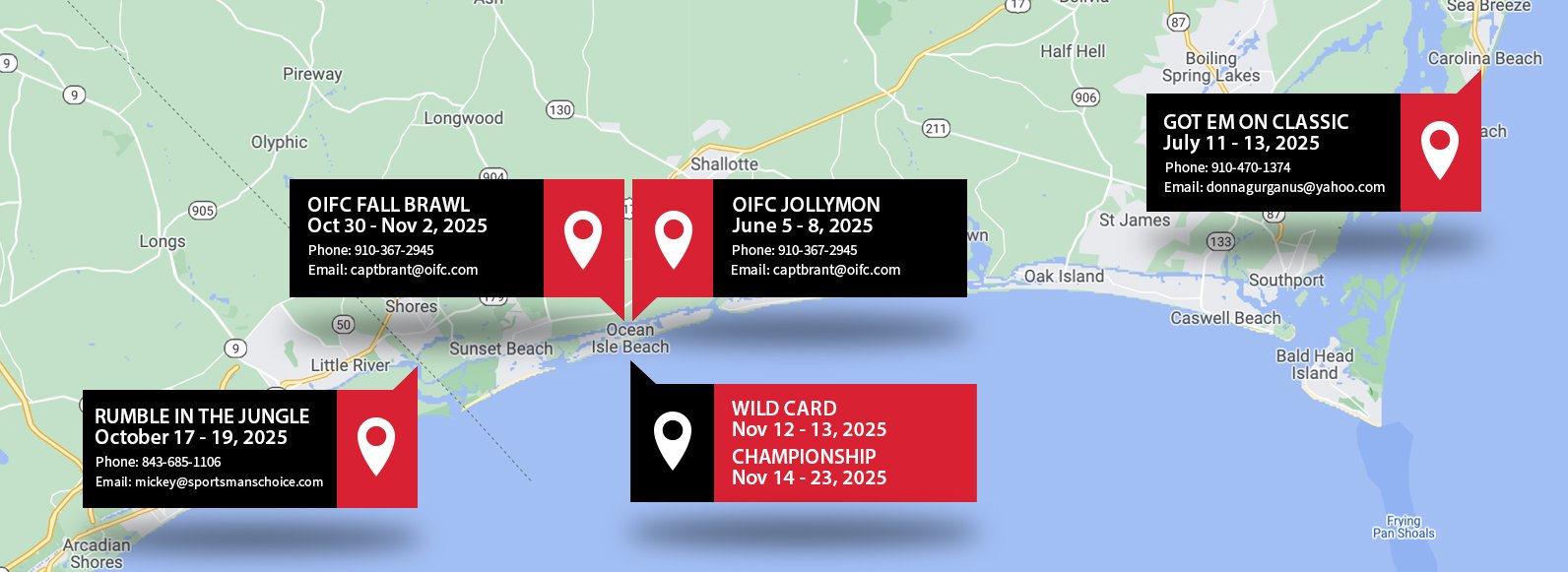
Tournament Fishing Website by InterCoastal Net Designs





